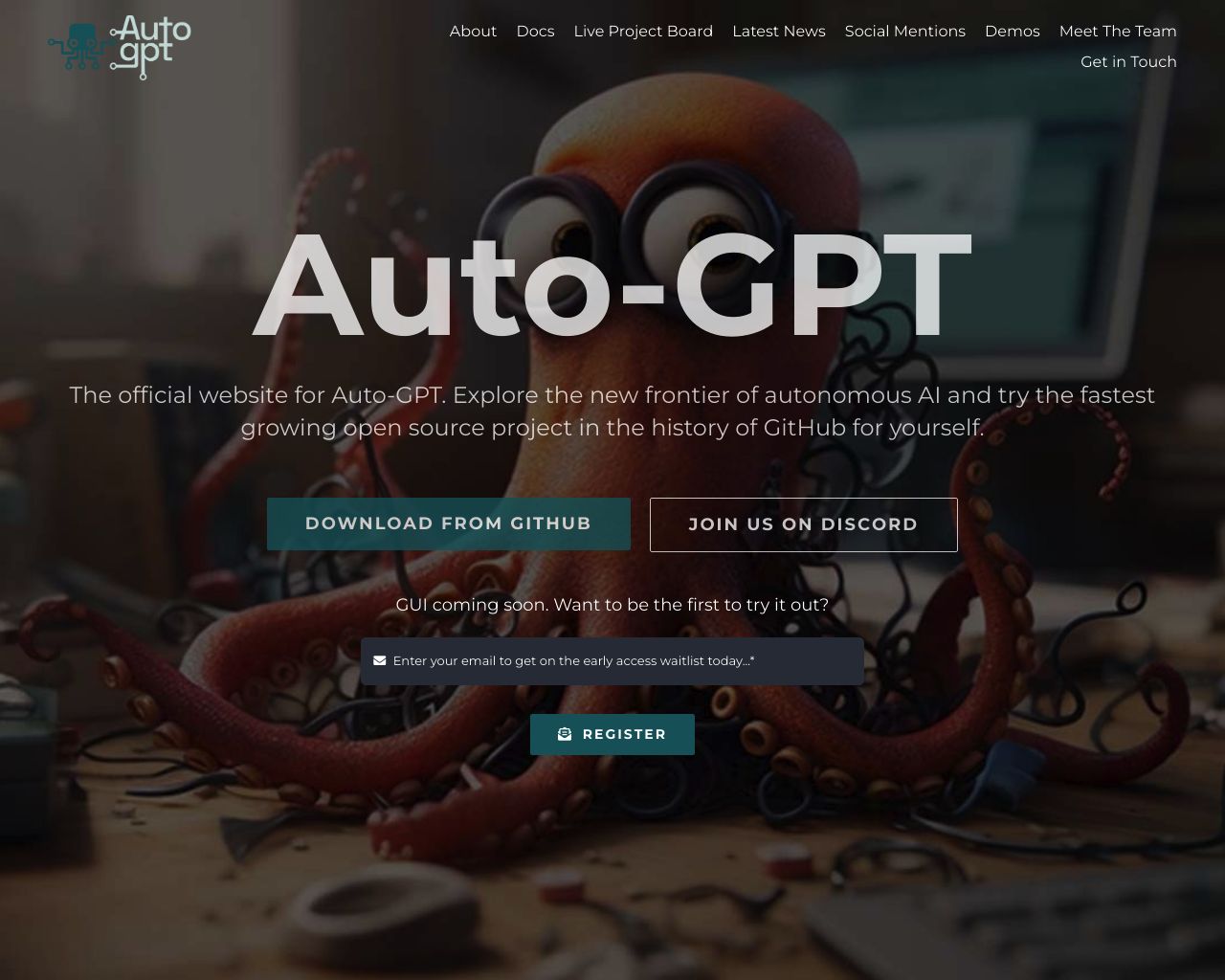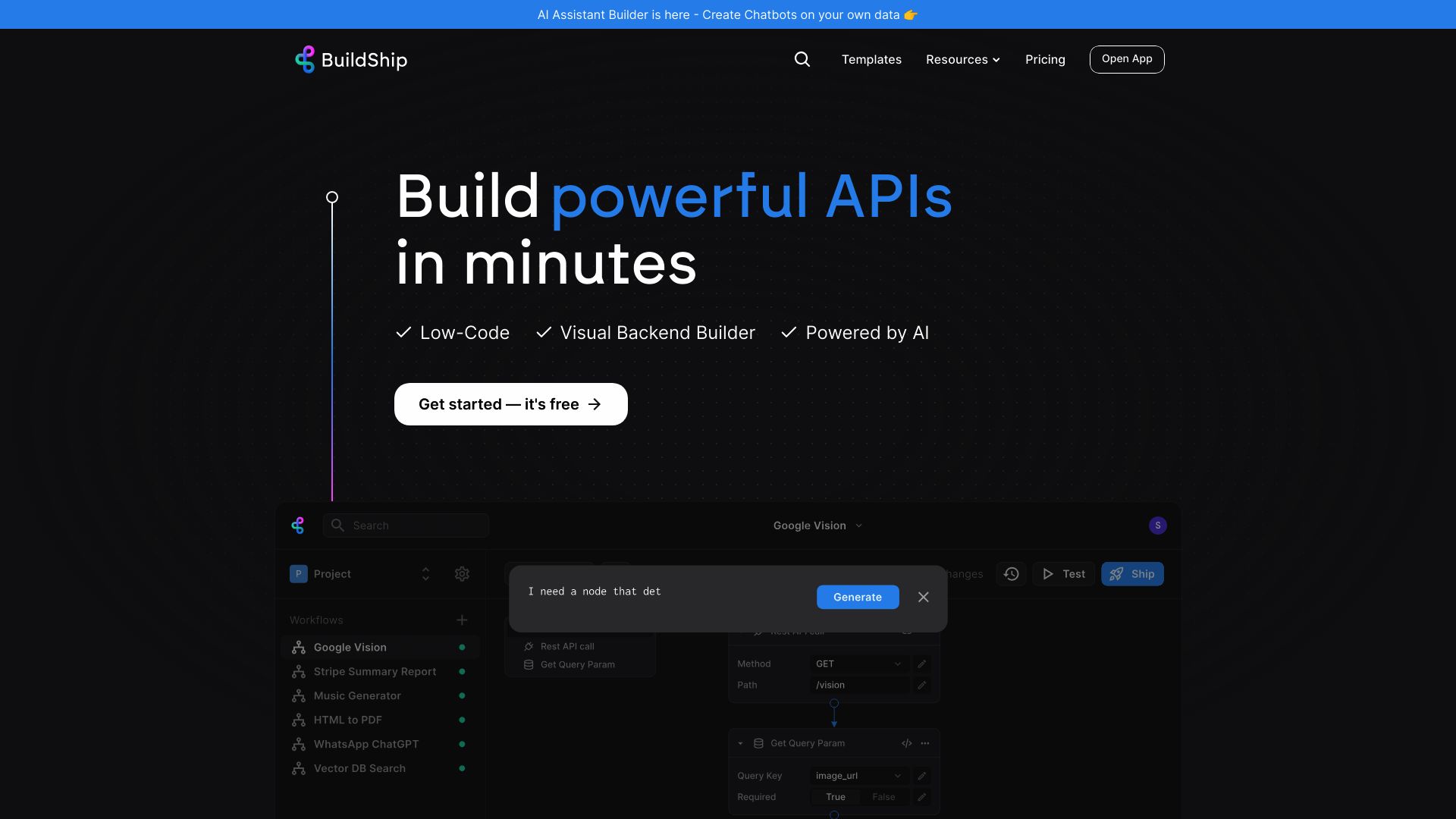AutoGPT vs. BuildShip: Comparing AI Development Platforms
AI development platforms AutoGPT vs. BuildShip, and SmythOS offer powerful tools for creating intelligent agents and automating workflows. AutoGPT revolutionizes AI with autonomous agents capable of complex problem-solving, while BuildShip streamlines backend development through visual no-code tools. SmythOS combines the strengths of both, providing advanced AI capabilities with user-friendly interfaces.
This comparison explores each platform’s unique features, use cases, and limitations to help developers, business leaders, and AI enthusiasts choose the right solution for their needs. Whether you’re building autonomous agents, automating backend processes, or seeking a comprehensive AI development environment, understanding the nuances of these platforms is crucial for leveraging AI’s full potential in your projects.
AutoGPT Overview
AutoGPT revolutionizes AI development with its open-source platform for creating autonomous AI agents. These agents leverage GPT-4 or GPT-3.5 to accomplish user-defined goals without constant human input.


AutoGPT’s visual builder empowers users to construct AI agents through a drag-and-drop interface. This no-code approach democratizes AI development, allowing even those without extensive programming knowledge to create sophisticated agents. The platform excels in breaking down complex tasks into manageable sub-tasks, maintaining short-term memory for context, and adapting to real-time feedback.
AutoGPT’s visual builder empowers users to construct AI agents through a drag-and-drop interface. This no-code approach democratizes AI development, allowing even those without extensive programming knowledge to create sophisticated agents.
Key features include multimodal input processing, allowing agents to work with both text and images. AutoGPT also supports REST API integration and custom plugins, enhancing its versatility. The platform’s debug mode and logging capabilities aid in troubleshooting and refining agent performance.
While AutoGPT offers impressive autonomous capabilities, it faces challenges. The platform lacks long-term memory, which can impact performance on extended tasks. Additionally, the recursive nature of its operations can lead to high costs. AutoGPT also doesn’t provide built-in features for multi-agent collaboration or scheduled agent deployment.
Despite these limitations, AutoGPT stands out in the AI development landscape. Its open-source nature fosters innovation and community-driven improvements. The platform’s ability to create agents that can self-prompt and make decisions autonomously pushes the boundaries of AI capabilities, inching closer to the vision of artificial general intelligence.
BuildShip Overview
BuildShip equips users with a visual no-code platform for crafting, testing, and deploying backend workflows and APIs. The platform’s drag-and-drop workflow builder incorporates prebuilt nodes and AI-generated custom nodes, enabling swift development of complex automations. BuildShip integrates various data sources, APIs, and AI models, allowing users to create sophisticated workflows without extensive coding knowledge.
Developers can augment BuildShip’s capabilities by writing custom logic in JavaScript or TypeScript, providing flexibility for more advanced use cases. The platform offers robust testing features for individual nodes and entire workflows, ensuring reliability before deployment. Once finalized, workflows can be deployed as production-grade APIs and seamlessly integrated into applications.
BuildShip equips users with a visual no-code platform for crafting, testing, and deploying backend workflows and APIs. The platform’s drag-and-drop workflow builder… enables swift development of complex automations.


BuildShip emphasizes efficiency and accessibility, aiming to accelerate backend development tenfold. The platform leverages AI to streamline workflow creation, offering features like AI autofill for inputs using natural language prompts. A template library further accelerates development by providing pre-built solutions for common scenarios.
Security remains a priority for BuildShip, with secure storage for API keys and secrets ensuring sensitive information remains protected. The platform also simplifies OAuth integration, facilitating connections with various third-party services. While BuildShip offers powerful capabilities for workflow automation and API development, it may have limitations in areas such as hosting environments or advanced AI agent functionalities compared to some specialized AI platforms.
Feature Comparison
AutoGPT and BuildShip offer distinct approaches to AI development and workflow automation. AutoGPT focuses on creating autonomous AI agents using GPT models, while BuildShip provides a visual platform for building backend workflows and APIs.
AutoGPT excels in autonomous task completion, breaking down complex goals into manageable subtasks without constant human input. Its ability to self-prompt and make decisions pushes the boundaries of AI capabilities. However, AutoGPT lacks built-in features for multi-agent collaboration and scheduled agent deployment.
BuildShip, on the other hand, emphasizes efficiency in backend development through its visual no-code platform. While it offers powerful workflow automation and API development tools, BuildShip may have limitations in advanced AI agent functionalities compared to specialized platforms like AutoGPT. BuildShip’s strength lies in its accessibility and rapid development capabilities for backend processes, rather than in creating autonomous AI agents.
Feature Comparison Table
| AutoGPT | BuildShip | SmythOS | |
|---|---|---|---|
| CORE FEATURES | |||
| Hosted Agents (Dev, Production) | ❌ | ✅ | ✅ |
| Memory & Context | ✅ | ❌ | ✅ |
| Autonomous Agents | ✅ | ❌ | ✅ |
| Explainability & Transparency | ❌ | ❌ | ✅ |
| Multimodal | ✅ | ❌ | ✅ |
| Problem-Solving Capabilities | ✅ | ❌ | ✅ |
| Multi-Agent Collaboration | ✅ | ❌ | ✅ |
| Human-AI Interaction | ✅ | ❌ | ✅ |
| Audit Logs for Analytics | ❌ | ❌ | ✅ |
| Work as Team | ✅ | ❌ | ✅ |
| Agent Work Scheduler | ❌ | ✅ | ✅ |
| SECURITY | |||
| Constrained Alignment | ❌ | ❌ | ✅ |
| IP Control | ❌ | ✅ | ✅ |
| COMPONENTS | |||
| Foundation AIs | ✅ | ❌ | ✅ |
| Huggingface AIs | ✅ | ❌ | ✅ |
| Zapier APIs | ✅ | ❌ | ✅ |
| Classifiers | ✅ | ❌ | ✅ |
| Data Lakes | ❌ | ❌ | ✅ |
| DEPLOYMENT OPTIONS (EMBODIMENTS) | |||
| Staging Domains | ❌ | ❌ | ✅ |
| Production Domains | ❌ | ❌ | ✅ |
| Deploy as Site Chat | ✅ | ❌ | ✅ |
| Deploy as Scheduled Agent | ❌ | ✅ | ✅ |
| Deploy as GPT | ✅ | ❌ | ✅ |
| DATA LAKE SUPPORT | |||
| Hosted Vector Database | ❌ | ❌ | ✅ |
| Sitemap Crawler | ❌ | ❌ | ✅ |
| YouTube Transcript Crawler | ❌ | ❌ | ✅ |
| URL Crawler | ✅ | ❌ | ✅ |
| PDF Support | ✅ | ❌ | ✅ |
| Word File Support | ✅ | ❌ | ✅ |
| TXT File Support | ✅ | ❌ | ✅ |
Best Alternative to AutoGPT and BuildShip
SmythOS stands out as the superior alternative to AutoGPT and BuildShip for AI agent development and deployment. Our platform combines the autonomous capabilities of AutoGPT with the visual workflow building of BuildShip, while offering additional features that enhance usability, scalability, and integration.
We provide a comprehensive solution for creating and managing AI agents through our intuitive drag-and-drop interface. Unlike AutoGPT’s complex setup process, SmythOS allows users to quickly build sophisticated agents without extensive coding. Our visual builder surpasses BuildShip’s by supporting a wider range of AI models and integrations.
SmythOS stands out as the superior alternative to AutoGPT and BuildShip for AI agent development and deployment… offering additional features that enhance usability, scalability, and integration.
SmythOS excels in multi-agent collaboration and human-AI interaction. While AutoGPT focuses on single autonomous agents, we enable teams of AI agents to work together seamlessly. Our platform also facilitates smooth interactions between humans and AI, a capability lacking in BuildShip’s backend-focused approach.
We offer unparalleled flexibility in deployment options. Users can deploy agents as APIs, webhooks, chatbots, or scheduled tasks — providing more versatility than either AutoGPT or BuildShip. Our hosted environments for development and production ensure a smooth transition from testing to live deployment.
With SmythOS, businesses gain access to enterprise-grade features like audit logs, data encryption, and scalable architecture. These critical components for large-scale AI implementations are missing from AutoGPT’s open-source model and BuildShip’s SMB focus. We empower organizations to leverage AI securely and efficiently across their operations.
Conclusion
AutoGPT, BuildShip, and SmythOS each bring unique strengths to AI development and workflow automation. AutoGPT excels in creating autonomous AI agents capable of complex problem-solving, while BuildShip offers a streamlined approach to backend workflow creation. SmythOS, however, emerges as the superior choice by combining the best of both worlds and offering additional cutting-edge features.
SmythOS’s drag-and-drop interface rivals BuildShip’s ease of use while providing the advanced AI capabilities of AutoGPT. Our platform supports multi-agent collaboration, scheduled deployments, and a vast integration ecosystem of over 300,000 connections. These features address limitations found in both AutoGPT and BuildShip, making SmythOS a more comprehensive solution for businesses and developers alike.
We’ve designed SmythOS to be both powerful and accessible, catering to technical teams with our API integrations and customization options, while also serving non-technical users through our visual builder and pre-built templates. Our platform’s scalability, security measures, and diverse deployment options make it an ideal choice for enterprises, startups, and individual developers looking to harness the full potential of AI.
Explore our diverse range of AI-powered agent templates to jumpstart your AI journey or create a free SmythOS account to experience the future of AI development firsthand. With SmythOS, you’re not just building AI agents; you’re unlocking a new era of productivity and innovation for your business.
Last updated:
Disclaimer: The information presented in this article is for general informational purposes only and is provided as is. While we strive to keep the content up-to-date and accurate, we make no representations or warranties of any kind, express or implied, about the completeness, accuracy, reliability, suitability, or availability of the information contained in this article.
Any reliance you place on such information is strictly at your own risk. We reserve the right to make additions, deletions, or modifications to the contents of this article at any time without prior notice.
In no event will we be liable for any loss or damage including without limitation, indirect or consequential loss or damage, or any loss or damage whatsoever arising from loss of data, profits, or any other loss not specified herein arising out of, or in connection with, the use of this article.
Despite our best efforts, this article may contain oversights, errors, or omissions. If you notice any inaccuracies or have concerns about the content, please report them through our content feedback form. Your input helps us maintain the quality and reliability of our information.
